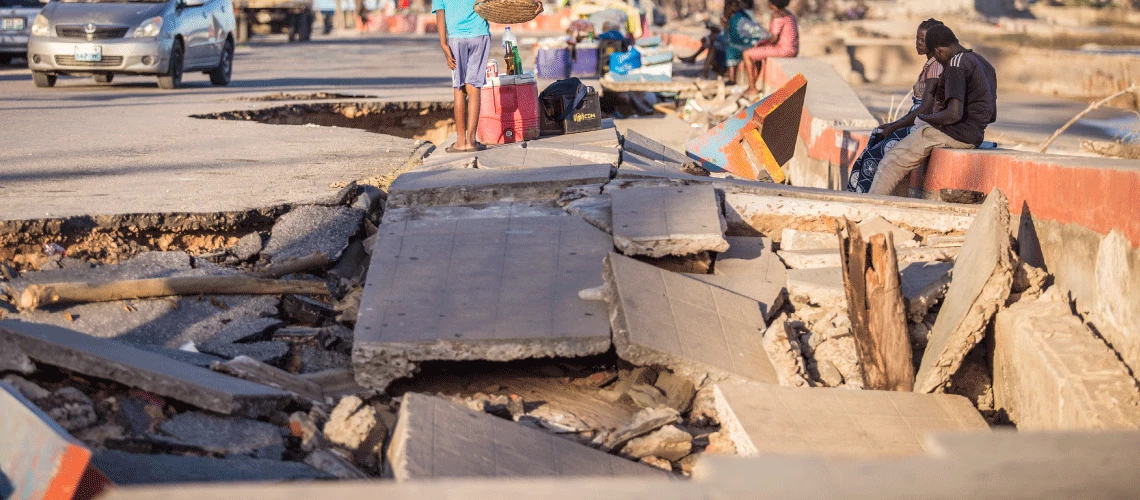 In Beira, Mozambique, Cyclone Idai caused extensive damage to the city's infrastructure, including roads. Photo: World Bank / Sarah Farhat
In Beira, Mozambique, Cyclone Idai caused extensive damage to the city's infrastructure, including roads. Photo: World Bank / Sarah Farhat
The rate at which climate financing is being mobilized is still vastly insufficient, but it is growing. As money is being mobilized for investments, rent seeking and (attempts) at corruption will inevitably be risks. We should not be surprised or shocked by this. But to retain the integrity, credibility, efficiency, and – most critically – the effectiveness of climate funding efforts, rent-seeking and corruption risks need to be identified and proactively addressed.
Corruption can undermine adaptation efforts when funds for constructing small scale infrastructure to protect against storms and floods or to store water are wasted or misdirected. Construction in remote locations may face elevated risks given limited supervision. Corruption can also affect major national adaptation or mitigation projects by reducing the quality of construction; and it can affect the investment climate in ways that delay or hinder investments in renewables and other elements of energy and transport transitions. Efforts at preserving or restoring forests face the risk of bribes paid to breach protection efforts and to facilitate illegal logging. The damage from corruption can far exceed the amount of funding that is misallocated. If construction meant to protect a city area from rising sea levels has sub-par quality due to corruption and fails, the costs can be loss of life and property. If investments in energy and transport transitions are slowed down due to corruption, the costs are similarly more than financial. Doubts about the proper certification of carbon offsets offered by voluntary private markets that were raised in early 2023– indicating insufficient attention to conflicts of interest– led to a decline in investments in these markets in subsequent months.
The recent Anticorruption for Development Global Forum hosted a discussion on the Green Transition and Anticorruption that suggested several avenues for addressing these challenges. There was agreement that the expected scale of funding– even if falling short of expected or needed levels– means that greater attention to corruption risks is critical, and that the many special funding channels being created require transparency and attention to how funds are used, including by civil society.
Seven proposed approaches emerged:
- Consider the risks, take action at risk mitigation, and keep learning and adjusting what works. This maxim applies across all types of funding channels and modalities.
- Create and promote transparency standards. This applies to expected and achieved results, as well as about transparency of funding flows.
- Make accountability comprehensive rather than just focused on financial aspects. The performance, and fairness, of investments made are even more important than accounting for dollars spent.
- Managing corruption risks without posing an undue hurdle to doing things. The urgency of climate change mitigation and adaptation investments is too great. Employing approaches to corruption risk mitigation that do not unduly slow investments should be a priority.
- Use technology to keep accountability efforts efficient. This does not mean having blind faith in technology since human assessment and analysis, as well as physical checks, are all important. But technology can be a key asset also in keeping track of funding and results without undue delays and costs.
- Engage local stakeholders considering contexts. Civil society and private sector representatives can play important roles– albeit varying by context. Sometimes, it can be local power-brokers who are best placed to monitor whether climate adaptation investments are well executed. Involving local communities in forest management is increasingly considered critical to sustainable success– but appears most effective when they have an overall stronger role in decision-making.
- Keep talking to investors, both international and local. Climate change mitigation will significantly rely on private sector investments, and talking to investors is the best way to know what is missing to enable further and faster scaling up of investments, as well as the potential corruption risks that impact the viability of investments.
Addressing the intersection of climate change and corruption is too important to just consider along narrow specialist silos, or to relegate it to an afterthought. It needs to be integrated throughout funding and investment cycles.



Join the Conversation